Why Your MidJourney Images Aren’t Good (And How to Fix Them)
Hey, my friend,
Grab a coffee. Get cozy. We’re about to break down everything you need to know to get started with MidJourney in 2025.
We’re covering everything—from signing up to advanced techniques like character references, inpainting, and using MidJourney’s editor like a pro.
Why MidJourney Should Be in Your Toolkit
A few months ago, I posted the same idea in two different ways. One was a wall of text. The other? A single AI-generated image.
Guess which one got 10x the engagement?
Not because the text was bad—but because images hit differently. A single well-crafted visual can capture 10x more emotion (and information)—something words often struggle to do.
Think about it:
- A vivid character portrait makes people feel the personality behind the face.
- A moody cyberpunk cityscape pulls someone instantly into a world that would take paragraphs to describe.
- A simple, striking concept can communicate an idea faster than any headline ever could.
This is why learning MidJourney isn’t just a creative skill—it’s a tool for better communication.
If you’re a creator, a marketer, or just someone who wants to make ideas more impactful, the ability to generate emotionally powerful visuals on demand is a SUPERPOWER.
Why Learning MidJourney Isn’t Just About Prompts
I used to think AI-generated images were just about writing good prompts. After all, I had spent time mastering LLMs, crafting text inputs, and building AI assistants—so how hard could it be?
Turns out, prompting for images is a completely different game.
The more I observed, the more I noticed something: The people creating the best AI images weren’t just great at structuring prompts. They had a technical knowledge of photography and image creation.
I started talking to marketers, designers, and video editors, and they all said the same thing—it’s not just about words, it’s about understanding images.
This forged my conviction: you can’t just “figure out” MidJourney (or Runway) by trial and error. You need to understand a few key visual concepts first.
And that’s exactly what we’re going to cover here.
Getting Started: Signing Up for MidJourney
MidJourney has finally made signing up easier. For the longest time, you had to use Discord. Now? You can just sign up with your Google account.
Much cleaner. Much simpler.
And if you’re a total beginner, good news: This guide will focus entirely on using the MidJourney website—no Discord necessary.
You can start with a basic plan at just $8 per month. That's plenty to test the waters and see what MidJourney can do for you.
I know what you're thinking: "Why pay for another tool when ChatGPT or Grok (or other tools) can generate images too?" Fair point! For quick, simple visuals, those general AI tools work just fine.
But MidJourney is in another league. The quality is consistently higher, you get way more control over the style, and the artistic possibilities are endless. Those “generalist” image generators just can't compete when you need something truly impressive or feels “more professional”.
I'm not going to bore you with a feature-by-feature breakdown of what makes MidJourney special. Just know that you'll get tools for character consistency, powerful editing capabilities, and organization features that no general AI can touch.
Let's dive into making the most of what MidJourney offers.
First Steps
This is the first screen you'll see once logged in.
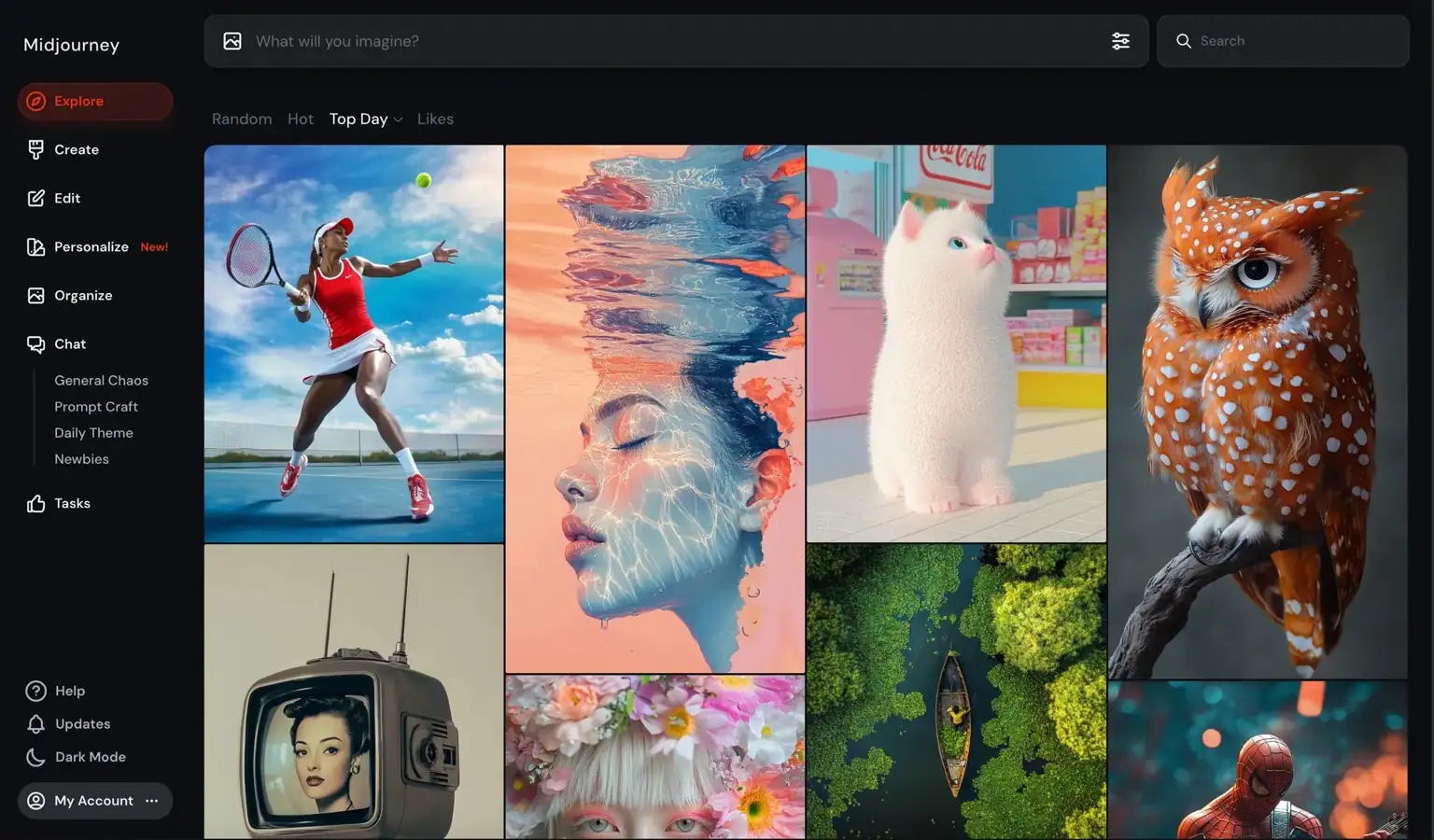
As you can see, Midjourney offers a library of hundreds (or thousands) of "Top Images," with their prompts, that you can use to get started or to replicate a given style.
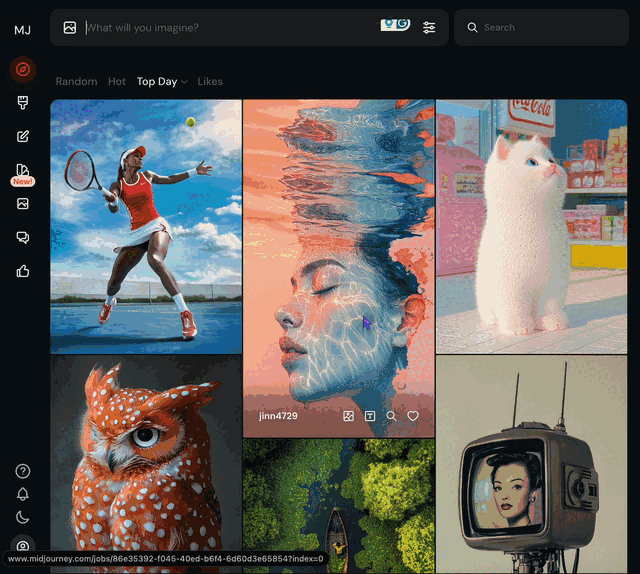
How to Write Better MidJourney Prompts
MidJourney isn’t just about what you type—it’s about how you type it.
Prompt Tip #1: Start Small, Then Build
Most people try to write one massive prompt at once. Don’t.
Instead, start simple and build up gradually.
Example:
👉 A) Start with: “A koala”
👉 B) Then refine: “A koala dressed like a gentleman”
👉 C) Keep tweaking: “A koala dressed like a gentleman, standing outside a bar”
👉 D) Add atmosphere: “A koala dressed like a gentleman, standing outside a busy bar, smoking a cigarette, vintage Polaroid style”
Why? Because MidJourney gives you four image options every time. This lets you adjust and refine instead of guessing everything in one go.
Depending on the vibe, I might stop at image (C) or want to create a “vintage vibe” and continue to image (D).

Sometimes MidJourney surprises you with a version that you like, one you hadn't planned but that works very well. Let's say I had image (D) in mind, but I'm happy with (C) and just want to add a cigarette.
Here are two ways to handle this:
- Use the "Vary Strong" and "Vary Subtle" buttons. MidJourney will create variations based on your image, though you don't get super precise control over the changes.
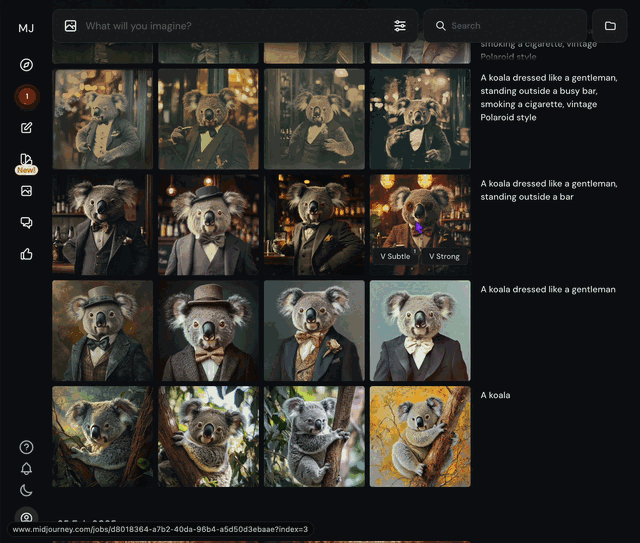
- Take image (C), upload it to ChatGPT, and ask it to describe the image in detail plus mention the cigarette you want to add. This trick is very very powerful—it gives you much more control to change only one very specific detail while keeping everything else unchanged. Btw MidJourney does something similar when you use the editor or more advanced features. I use it all the time! Here’s what I got for example for this image ↓
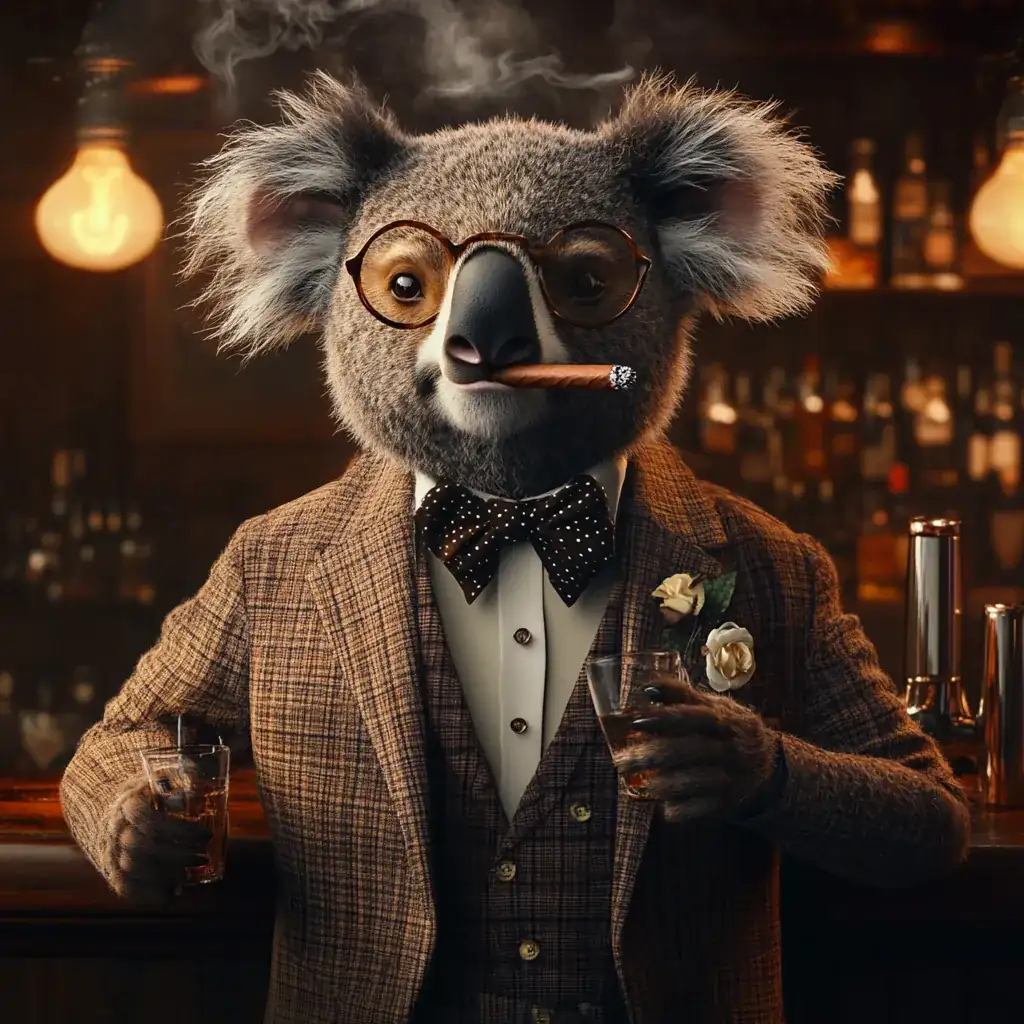
Prompt Tip #2: Subject First vs. Setting First
The order of your words matters.
Example 1:
👉 A) “A guitarist strumming under a dimly lit street at night” (focuses on the guitarist)
👉 B) “A dimly lit street at night, a guitarist is strumming” (focuses on the environment)
MidJourney prioritizes what you mention first. Keep that in mind when framing your ideas.
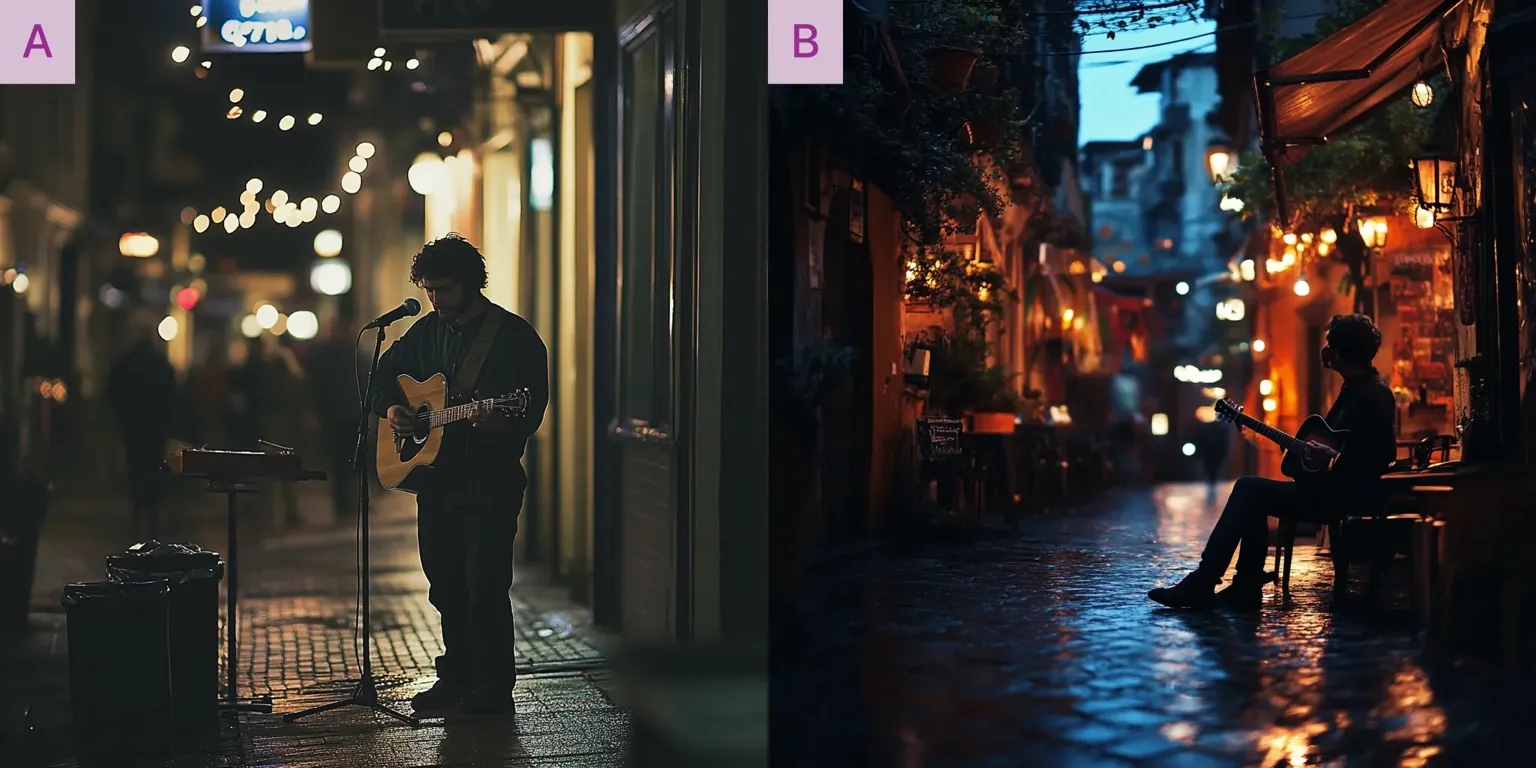
Mastering MidJourney Parameters (The Secret Sauce)
Think of parameters like spices in a recipe. Use them to fine-tune how MidJourney interprets your prompts.
1) Stylize (--s)
Controls the balance between beauty vs. accuracy.
- --s 0 → Follows your prompt exactly (but often looks ugly).
- --s 100 (default) → A balanced approach.
- --s 1000 → Maximum beauty (but may ignore details from your prompt).
Example:
“A child’s crayon drawing of an elephant near a purple waterfall”
👉 A) --s 0 (ugly but accurate)
👉 B) --s 100 (balanced)
👉 C) --s 1000 (stunning but may forget the elephant exists)
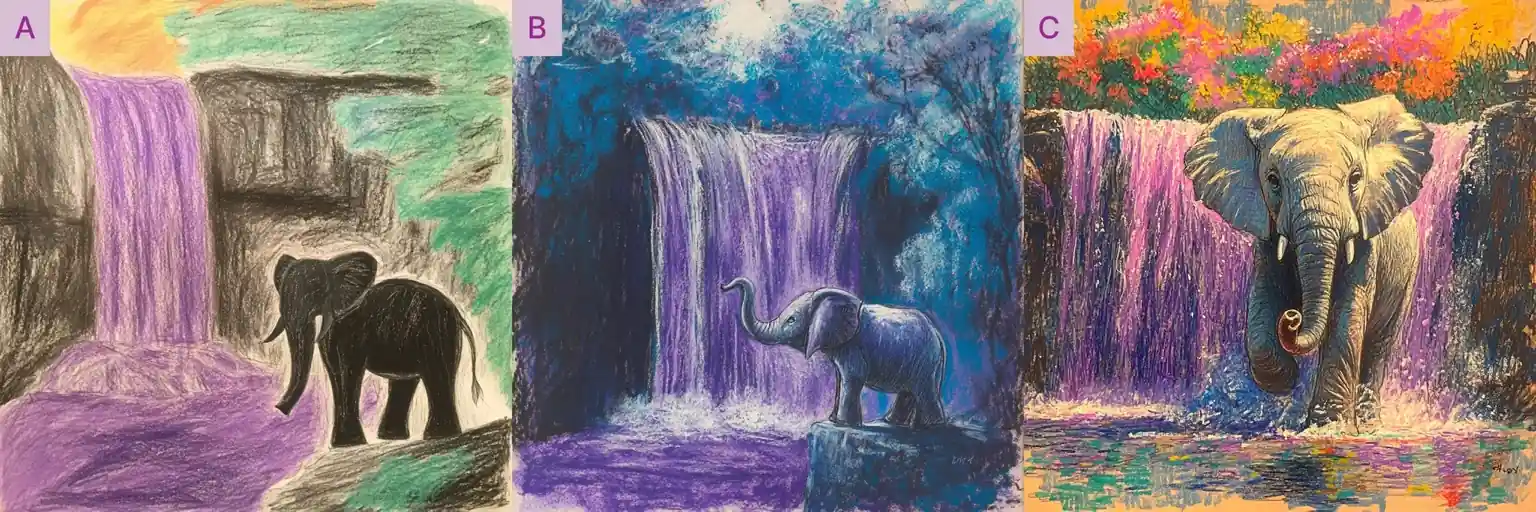
2) Chaos (--c)
Want more variation in your results? Increase the chaos value.
- --c 0 → Images will look very similar (default).
- --c 5 → Good variety without going too wild.
- --c 20+ → Expect weird, unpredictable results.
Example:
Prompt: “Ultra-realistic hero shot of Spider-Man”
👉 A) Chaos 0: All four images are nearly identical.
👉 B) Chaos 5: Some creative variations.
👉 C) Chaos 100: MidJourney goes completely off the rails.



Remember that parameters aren't limited to typing codes like "--c" and "--s" in your prompts. You can also apply "global parameters" to your images directly through the user interface.
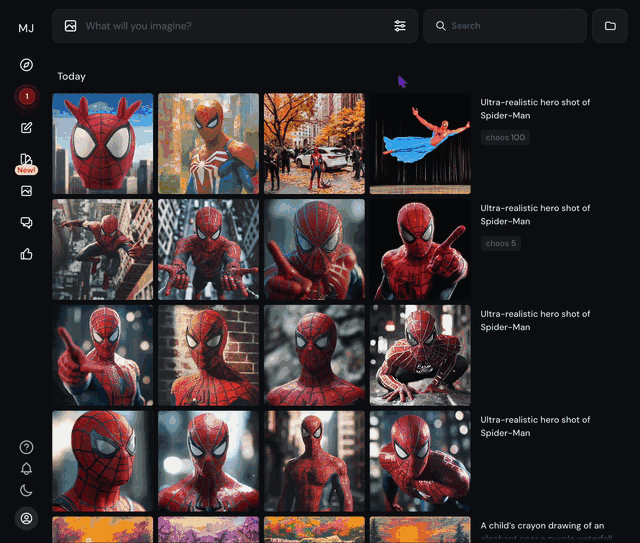
3) Style Raw
If MidJourney keeps making your images too artistic, use Style Raw to force it into photorealism mode.
- Regular MidJourney: Dreamy, painterly images.
- Style Raw: Looks like an actual photo.
I have to say that when I was first exploring MidJourney, I couldn't understand how people could get very realistic photos while I got painterly images. Here’s how ↓
Example:
👉 A) “A guitarist strumming under a dimly lit street at night”
👉 B) “A guitarist strumming under a dimly lit street at night --style raw”
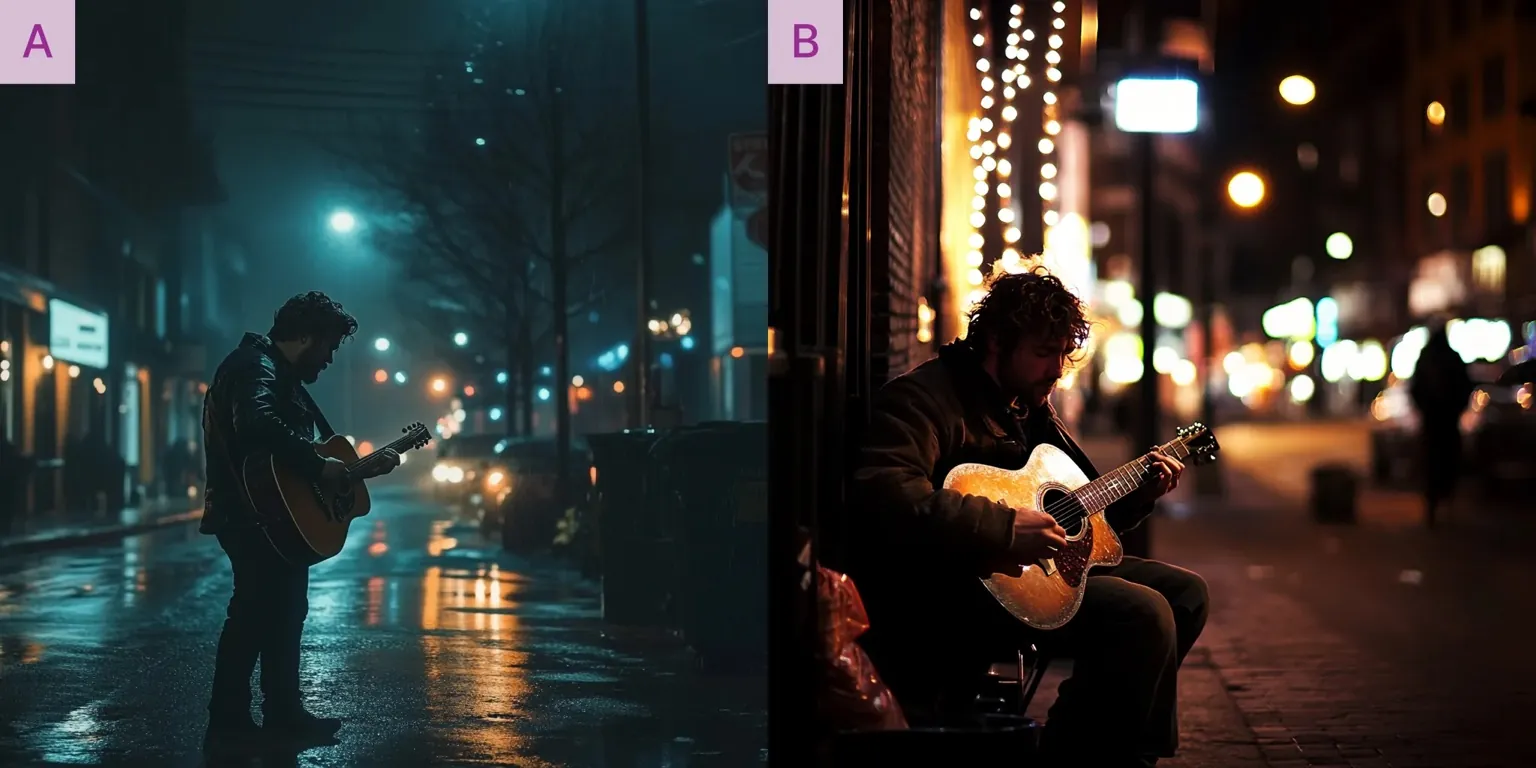
The difference is sometimes very subtle, but if you're wondering how to make your generated images look very realistic (like a photo), "--style raw" is the answer.
Advanced MidJourney Techniques
1) Using Seed Numbers for Consistency
Ever want to recreate a result you loved? Use a seed number.
The --seed parameter controls the randomness in MidJourney’s image generation. Each image starts with a “noise pattern,” and the --seed value determines that pattern.
- Same seed + same prompt = similar images
- Different seeds = completely different images
Why Use It?
- Consistency → If you find a great image and want slight variations, use the same seed.
- Reproducibility → Share prompts with others and get similar results.
- Controlled Experiments → Compare small changes in a prompt while keeping the base structure the same.
How to Use --seed
Add --seed XXXX at the end of your prompt (replace XXXX with a number between 0 and 4,294,967,295).
Example:
👉 A) “A futuristic city skyline, sunset --seed 12345”
👉 B) “A futuristic city skyline, sunset --seed 12345”
👉 C) “A futuristic city skyline, sunset, a plane crossing the sky --seed 12345”
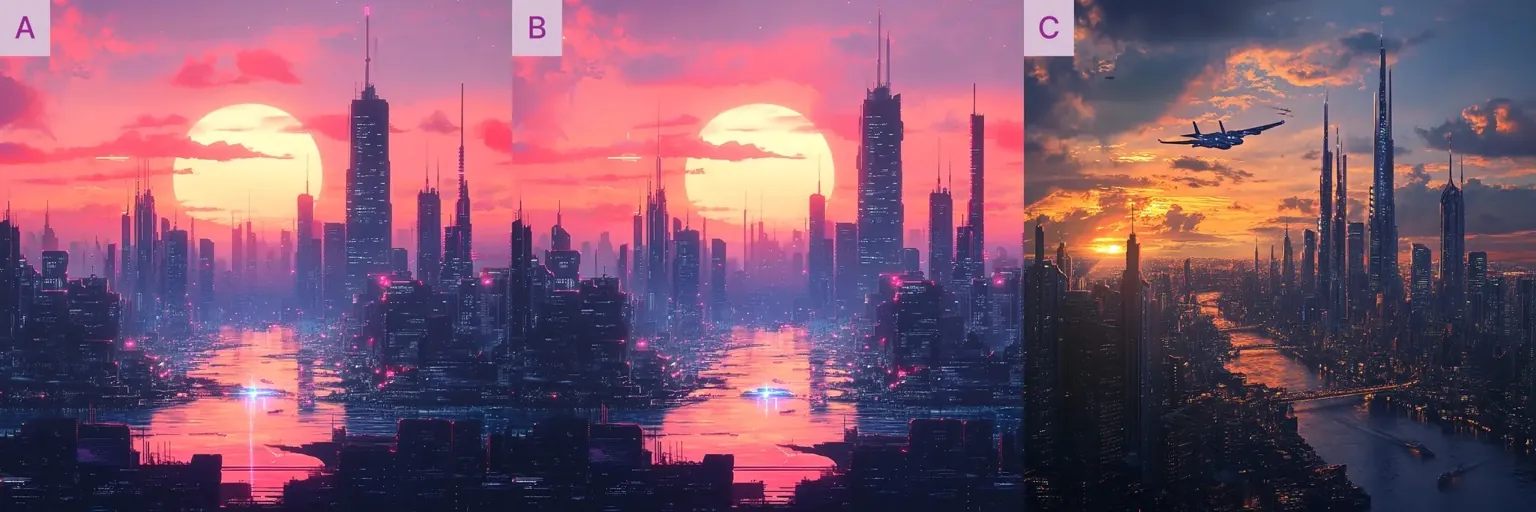
I wouldn't say that (C) is completely consistent with (A) and (B), but it "statistically" should maintain the same "vibe." If I use the exact same prompt as (C) without including the seed, I get something like this:
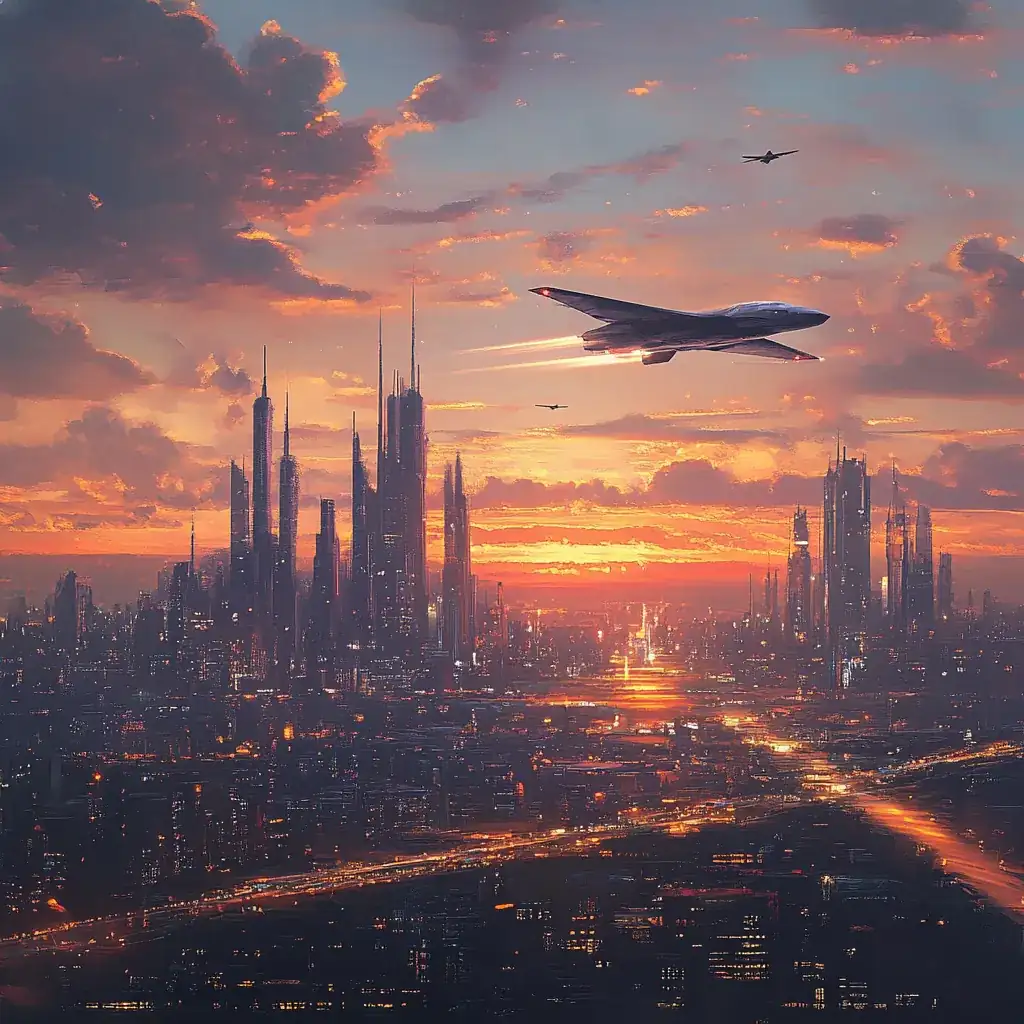
Anyway, the best way I've found to make small adjustments to images I like is (as I explained above for the Koala) by taking the image from MidJourney, asking ChatGPT (or another AI assistant) for a detailed description, then putting that description back into MidJourney with my desired changes (or use the editor as explained below).
2) Variations & Upscales
Found an image you love but want small tweaks? Use strong variations.
👉 Subtle Variation: Small refinements.
👉 Strong Variation: More noticeable changes (cf. the Koala example above).
Once you’re happy, hit Upscale to make it high-resolution.
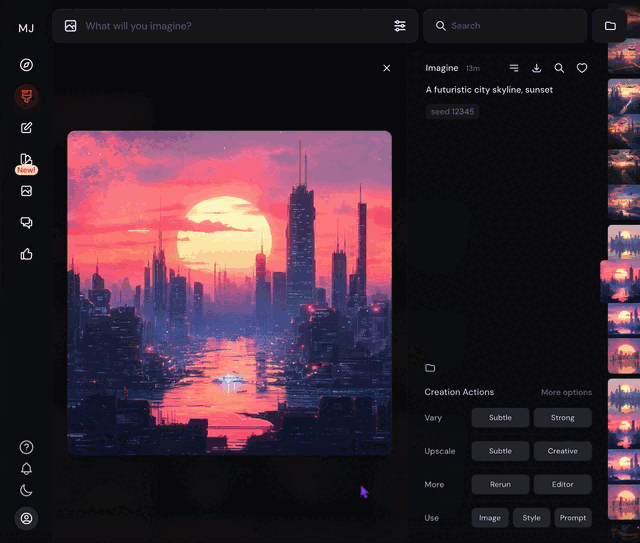
3) Inpainting & Outpainting (Fixing & Expanding Images)
You can edit parts of an image instead of starting from scratch.
- Inpainting: Fix details (e.g., hands, eyes, backgrounds).
- Outpainting: Expand beyond the original frame (e.g., make a landscape wider).
Example:
🟢 You have a portrait of a woman but her hand is weird.
🟢 Use inpainting → Select the hand → MidJourney fixes it.
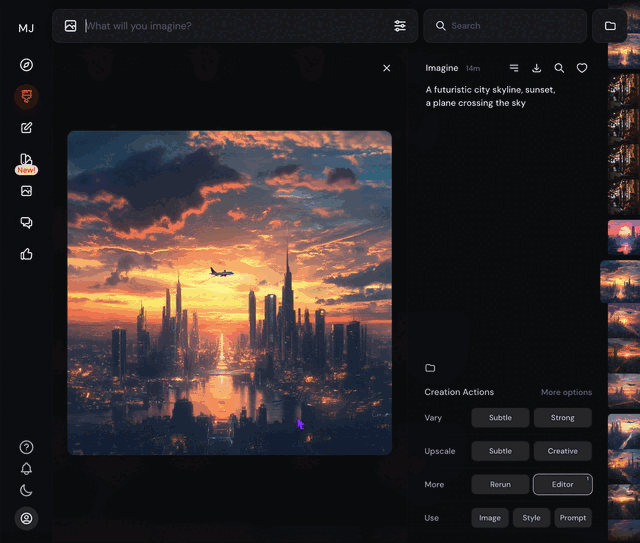
The editor is the best way to edit images in MidJourney. It's more elegant, and what you can do with the process is extremely powerful. However, this feature is only available if you subscribe to an annual plan. If you don't want to commit to an annual subscription, you can still use the process I described above (using another AI to describe your image).
Check out another example where I fixed the guitarist's “weird” hand using the editor - looks way better!

4) Character Consistency (Using Character Reference for Multiple Images)
Want to create a consistent character that shows up in multiple images? MidJourney's Character Reference feature has got you covered!
What is a Character Reference?
Think of it as MidJourney's way of remembering what your character looks like. It keeps track of their unique features—hair color, face shape, clothing style—so you can place them in different settings without losing their identity. No more recreating your character from scratch every time!
How to Use It:
- Click the image icon in the Imagine bar to open your image panel
- Upload your character image or pick one you've already used (let’s use our Koala!)
- Hover over the image and look for more options
- Click the Character Reference icon to tell MidJourney "focus on this character"
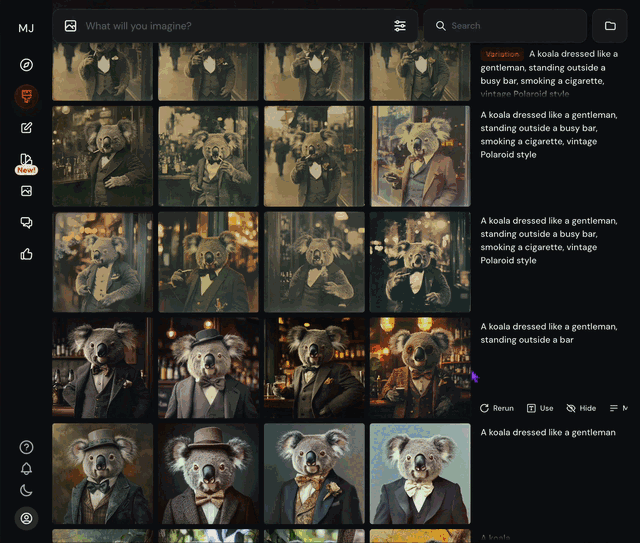
💡 Quick Tip: For even better character consistency, try combining Character Reference with --seed and --style raw. This trio works magic!
Here's what we got for our Koala in a Parisien coffee ^^:
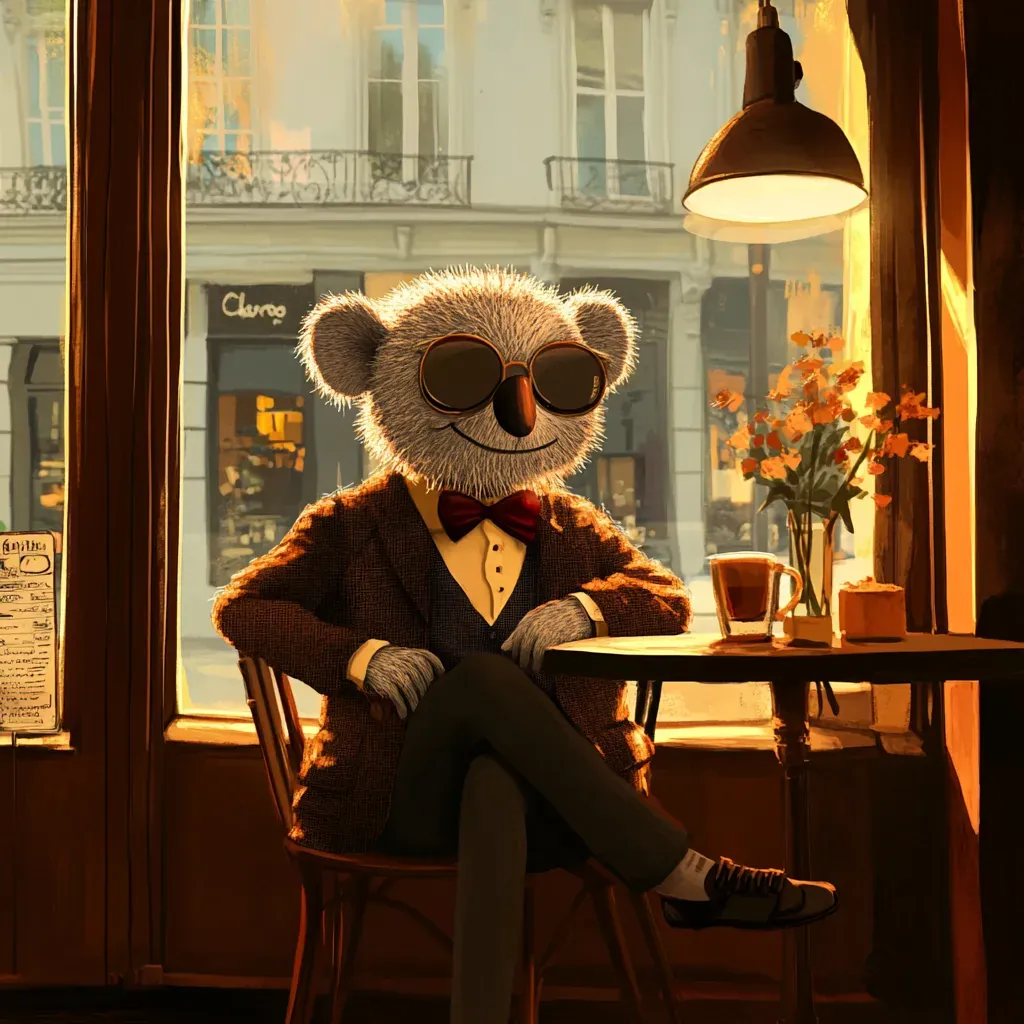
Now you can drop your character into any scene, pose, or adventure.
Using Image & Style References
You can feed MidJourney an image and use it in different ways:
1) Image Prompt: Mixes an existing picture with a text prompt.
2) Style Reference: Uses the colors and aesthetics of an image.
3) Character Reference: Keeps a character’s face but changes their outfit/pose.
Example:
🟢 Upload a hand-drawn umbrella and type “A futuristic car.”
🟢 MidJourney will generate a futuristic car in that same hand-drawn style.
Here's a fun example. I asked MidJourney to blend “my face” with an image I generated using ChatGPT. You can see what MidJourney can do! While it doesn't capture me perfectly (better prompts might help), the real value isn't about perfection—it's about creating interesting artistic combinations and sparking new ideas.
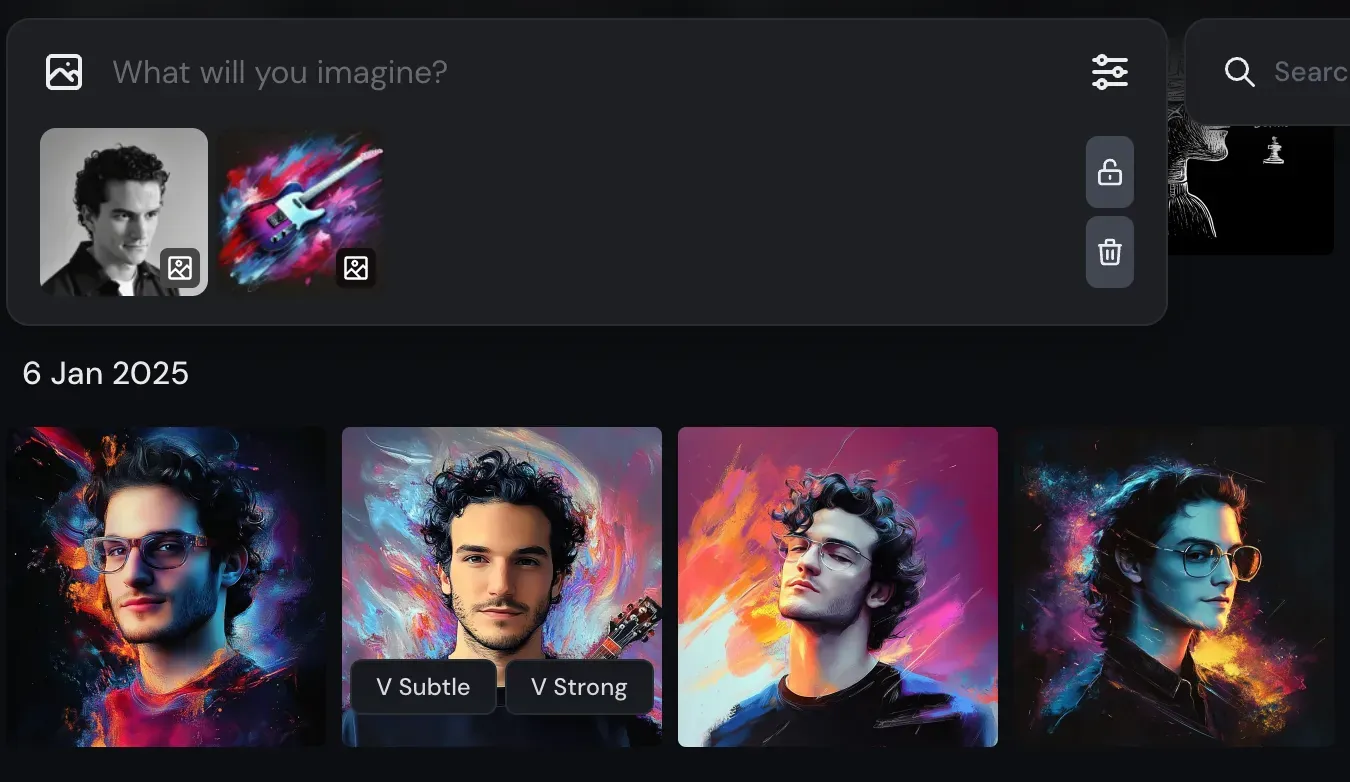
The Most Powerful Feature: Mood Boards
Instead of describing your ideal style over and over, just create a Mood Board.
How?
- Pick 10–20 images that match the look you want.
- MidJourney will take the average of those styles.
- Use –profile [moodboard name] in your prompts to generate images in that exact style.
Example:
🟢 A mood board of pop art cartoon illustrations → Generates any subject in that style.
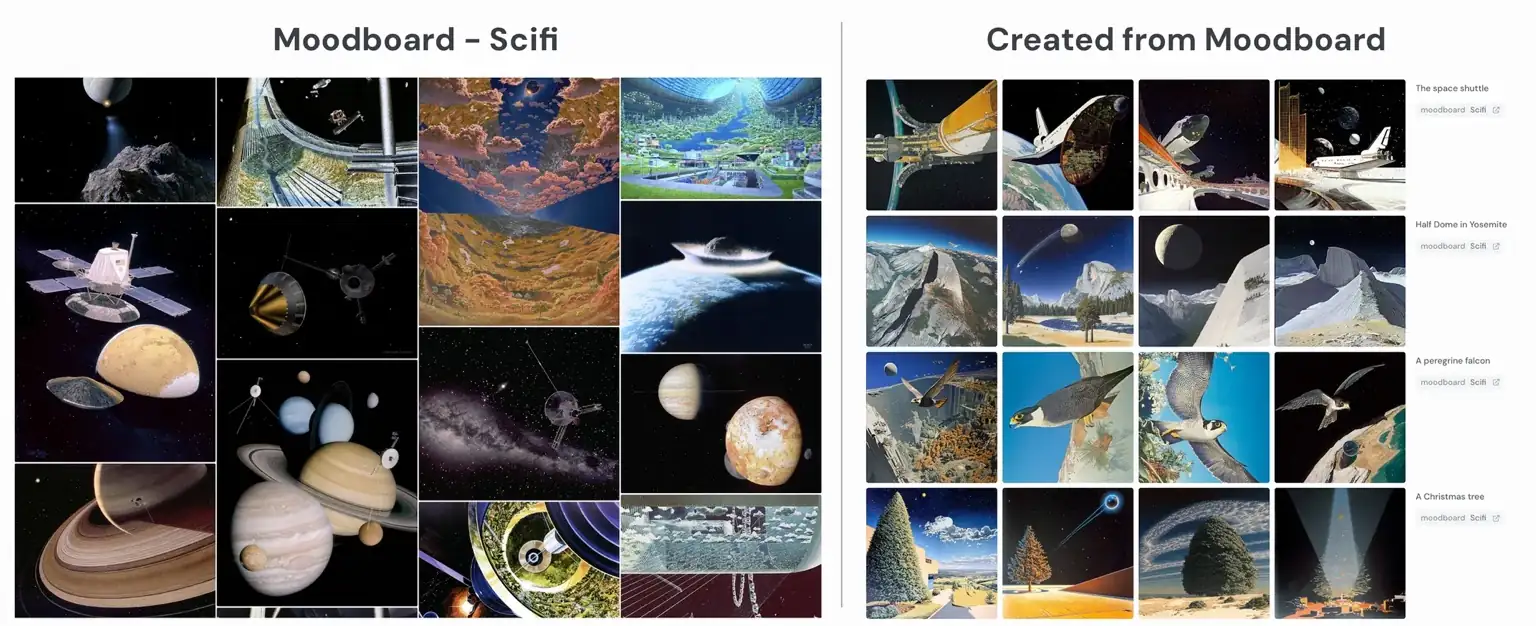
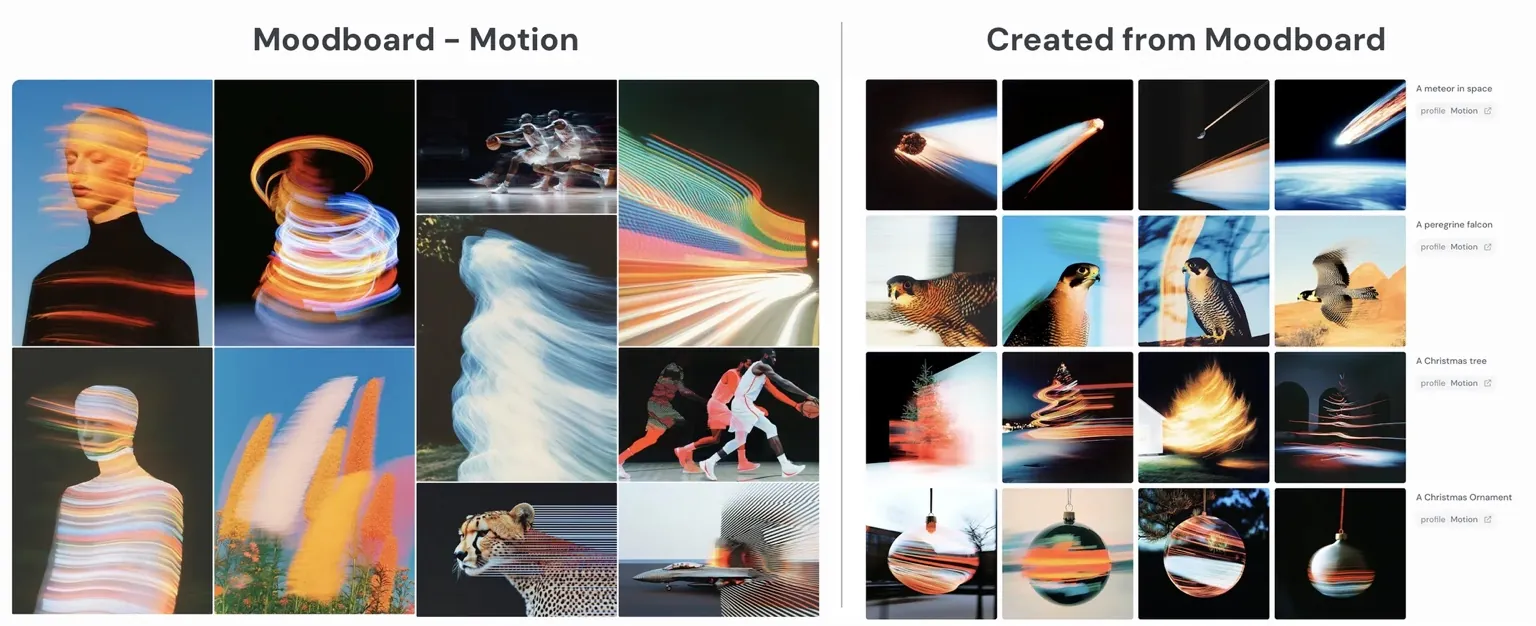
Final Thoughts
MidJourney keeps evolving, and this guide barely scratches the surface.
But if you master these techniques, you’ll:
- Get better results, faster
- Waste less time tweaking bad images
- Be able to create consistently amazing artwork
I've got to be honest with you – learning MidJourney changed everything for me.
Most people waste hours tweaking prompts and getting nowhere. But once you understand these core techniques, you'll create stunning visuals in minutes, not days.
The truth? AI art generation isn't just about pretty pictures. It's about expressing ideas that were locked in your head, visualizing concepts that words alone can't capture, and yes – impressing clients or followers with jaw-dropping imagery.
I still remember my first perfect generation – a surreal cityscape that looked exactly like the vision in my mind. That feeling of "holy crap, it actually worked" is addictive.
By mastering the techniques in this guide, you'll skip the frustrating trial-and-error phase that causes most people to give up. You'll join the small percentage who can reliably create professional-quality imagery on demand.
The best part: once you understand one AI art tool deeply, you've built a foundation that makes learning every other tool 10x faster.
So dive in. Experiment wildly. Break the rules sometimes.
The future belongs to visual storytellers – and you're about to become one.
Until the next one,
— Charafeddine
